Ex-Theranos employee's wife: People like Elizabeth Holmes 'should be in jail': 'The Dropout' ep 2
In 2009, Theranos was low on cash but Holmes had an ace up her sleeve.
Watch the two-hour documentary, "The Dropout," THIS FRIDAY, March 15, 2019, at 9 p.m. on ABC.
This is episode 2 of "The Dropout," a six-episode ABC Radio podcast.
Watch a preview of the upcoming "Nightline" documentary HERE and click HERE for episode 1.
It was 2009 and Theranos founder and CEO Elizabeth Holmes was in a precarious place. She had an office, a handful of employees and a lofty mission, but her ambitious blood-testing company was low on cash.
At this point, as Holmes recounted in a 2017 deposition with the Securities and Exchange Commission, she was considering an equity raise, essentially trying to find new investors to buy into her company. The trouble with that was timing. This was in the midst of the Great Recession and even companies that had been around for generations were struggling to get loans, and many were going out of business.
It turns out Holmes had an ace up her sleeve: Ramesh “Sunny” Balwani.
"So the company was low on the cash, and I knew this mission, what the company was trying to do, was paramount. So I offered to help the company... I ended up giving a $13 million personal loan... And it was interest-free... It was a good faith loan," Balwani said in a 2017 deposition to the Securities and Exchange Commission, obtained by ABC News and featured on "The Dropout" podcast.
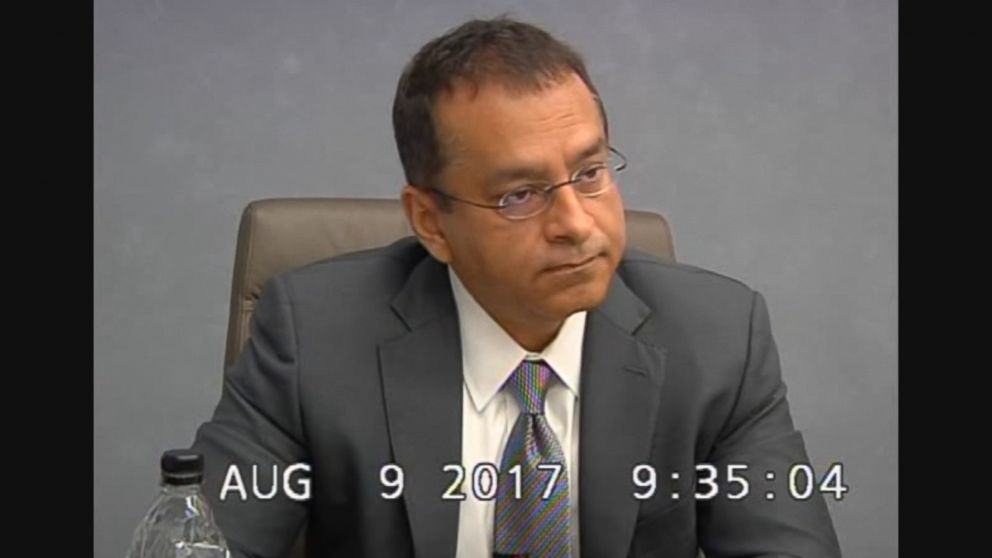
Balwani officially joined Theranos in September 2009 after the former software executive sold his company just before the dotcom bubble burst and made millions. Prior to that, he had worked at Lotus and Microsoft.
After giving Theranos that initial loan, Balwani’s role at the company would become more permanent.
"Six months later...when I had decided that I’m going to stay here for the long term, and the board said, 'absolutely, you must,' they made me president and COO," Balwani said in his deposition.
Like Holmes, Balwani had his own kind of uniform: a white button-down shirt, jeans and expensive loafers. He always smelled of cologne and became known for his flashy tastes, former employees told ABC News' Rebecca Jarvis on "The Dropout" podcast.
He drove two cars, both with vanity plates: a black Lamborghini with a "VDIVICI" vanity plate -- as in, "veni vidi vici," a reference to Julius Caesar’s "I came, I saw, I conquered" -- and a Porsche 911 with a vanity plate that read "DAZKPTL" -- paying homage to Karl Marx’s anti-capitalist manifesto, "Das Kapital."
But while Balwani had the finances to help Theranos, his qualifications in health care were non-existent.
"Did he have any qualifications in the lab testing business?" an SEC attorney asked Holmes.
"He did not," Holmes answered.
SEC attorney: "Or in pathology or anything like that?"
Holmes: "Not to my knowledge."
Balwani became a very striking figure around the office, but his presence confused a lot of employees, including Michael Craig, a senior software engineer.
"I always wondered why he was there," Craig told Jarvis. "If she was actually had held this vision of really impacting the world, I was like 'Why, why did you pick him then?'"
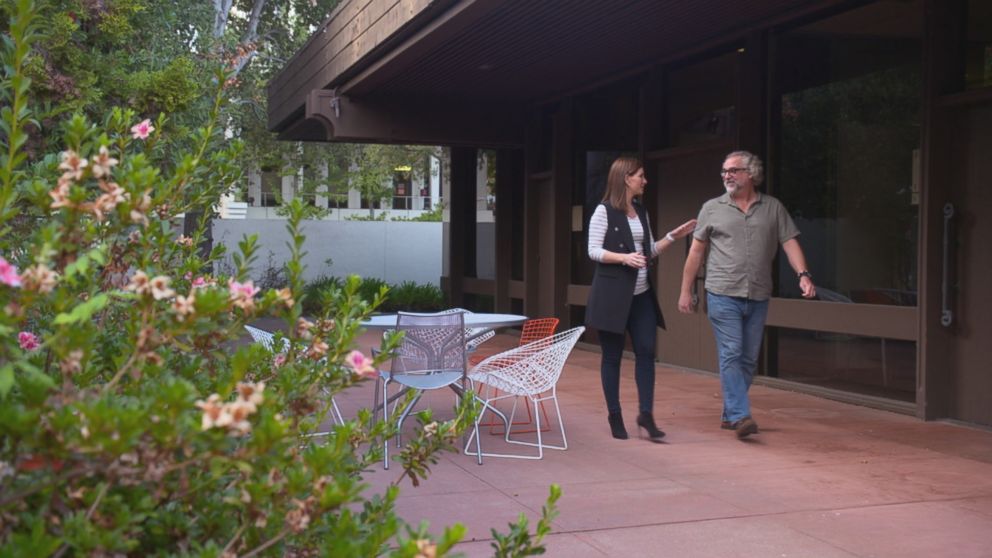
Craig worked at Theranos for almost five years and reported directly to Balwani. He remembered his boss being "terse" and "a bit of a hothead."
"He has like that that need to prove himself ... And also pretending like he's above everything." Craig said.
He remembered one instance at a company party when he asked Balwani about some office decor.
"He had these set of Samurai swords in his office for a long time. And, I finally was like, 'So what's your interest in those swords? You know, I'm pretty interested in a lot of that stuff.' And he basically said, that, no, 'it was just a thing.' I was like, 'Whoa like there's not even a story there, that's just like some object that you just put there,'" Craig said.
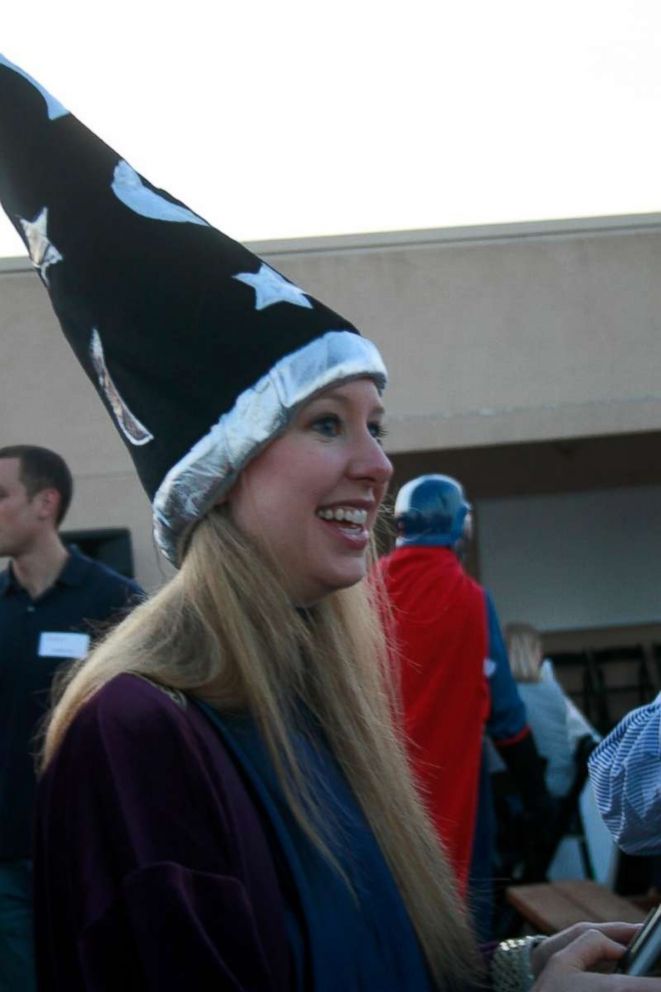
Balwani became the most important person at the company, after Holmes. Former employees told Jarvis that they would frequently see the pair conducting meetings in their big windowed offices at the end of the hallway. They were a tag team: Holmes would focus on the company’s board of directors and big-picture ideas, while Balwani would manage the day-to-day with employees and business partners.
"I would generally do the first meeting or two and talk about the vision, and then he would follow up on any questions that they had from a diligence perspective and provide them with that information," Holmes said in her SEC deposition.
Balwani also wasn’t afraid to get involved in the lab. At this time, Theranos was developing its so-called Edison technology, a machine that was supposed to process any blood test with just a few drops of blood from a finger stick.
Despite the fact that Balwani had no real scientific training, he would come in, roll up his white button-down shirt sleeves and start working.
"When there was a shortage of people on weekends ... I would say, 'Okay. Train me. I’ll do it.'" Balwani said in his deposition.
"You learned how to do all of that?" an SEC attorney asked.
"Yes... Life in the startup. Right?" Balwani replied.
Balwani was a hard worker but employees said he was also developing a reputation as a bully, someone with a menacing presence.
"Initially he would be fairly nice...but then through email, he frequently would get really upset about different things, and it was like, 'this is unacceptable,' or 'you guys don’t know what you’re doing,'" former Theranos employee Erika Cheung told Jarvis.
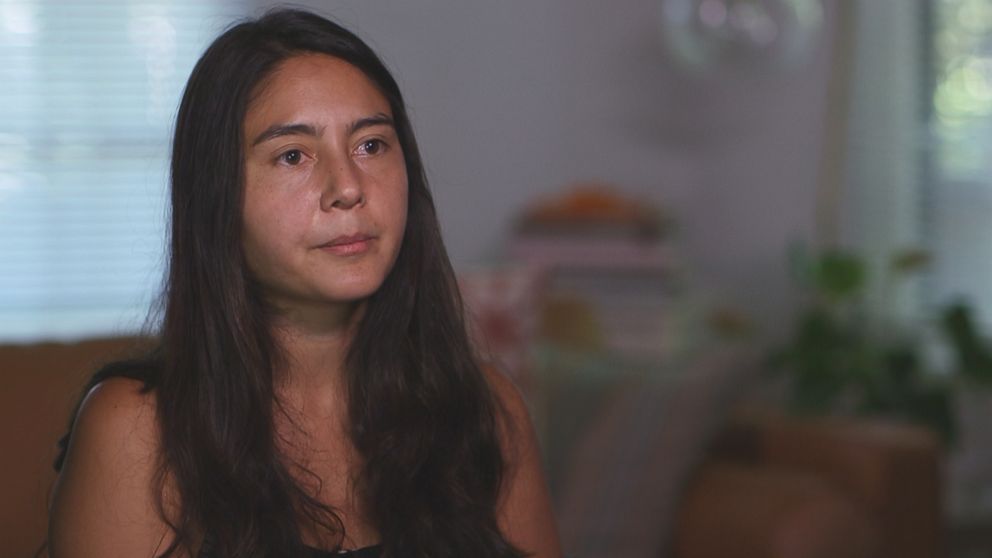
"He was always sort of firing back at people and blaming people for different things that were going on and was always unsatisfied with what people were doing and how they were doing it," Cheung said.
Cheung said that it became difficult to work for Balwani because of his temper.
"He would just get so angry and so upset, and also was not very well versed in the medical diagnostic world and wasn’t really well versed in the sciences, so would frequently say things that were just inappropriate," she continued. "And it became very clear to entire departments that he didn’t understand really what was going on."
Tyler Shultz, another former colleague of Cheung’s, said that Balwani had a nickname around the office.
"It was just like pretty well known that Sunny was, kind of, the enforcer," Shultz said in a 2017 deposition with the SEC that was obtained by ABC News and featured on "The Dropout."
Theranos whistleblower says in 2017 deposition Holmes lied about device capabilities
"The enforcer of what?" asked an attorney for the SEC.
"Of like these intimidation tactics," Shultz said.
According to former employees, Balwani’s management style caused many people to leave the company. They describe the culture as a revolving door.
While under oath during her deposition, Holmes appeared to attempt to distance herself from Balwani’s behavior.
"We disagreed all the time about a lot of things. We have very different leadership styles." Holmes said in her deposition.
So what was keeping this millionaire, with so little relevant health care or science experience, who was making waves inside the company, in such a powerful role?
There’s one detail Holmes wasn’t exactly sharing that might explain the whole thing. Holmes, nearly 20 years younger than Balwani, was not just his boss.
She was also his girlfriend.
It was a fact that they kept mostly under wraps, from investors, the press and even from some board members.
"Did you ever tell investors that you and Mr. Balwani had a romantic relationship at the time that you were asking them to invest in Theranos?" an attorney for SEC asked Holmes during her deposition.
"No," Holmes replied.
Ex-Theranos CEO Elizabeth Holmes says 'I don't know' 600+ times in depo tapes: Part 2
Even former employees, like Michael Craig, had no idea. He said he was shocked when he found out the two were in a relationship.
"She was stoic in general, she was monk-like," Craig said.
Wall Street Journal reporter and author of "Bad Blood: Secrets and Lies in a Silicon Valley Startup," John Carreyrou, said he was astounded by this twist.
"One of the first things that raised my eyebrows was when I had my first conversation with the lab director and he told me that Sunny and Elizabeth were an item... And I was stunned by that." Carreyrou told Jarvis.
In fact, much of the publicity surrounding Theranos made it sound like Holmes didn’t have a personal life. It was something her mother openly worried about in a 2014 New Yorker article, in which she was quoted as saying, "As a parent, I do hope that at some point she will have time for herself."
In the same profile, Henry Kissinger, who was on Theranos’ board of directors at the time, even suggested he’d been trying to set Holmes up on dates. But in reality, Holmes and Balwani were very much together. They had met several years before Theranos, when she was about 18 and Balwani was 37.
It was summer 2002, and the pair was in the same program at Beijing University, both studying Mandarin.
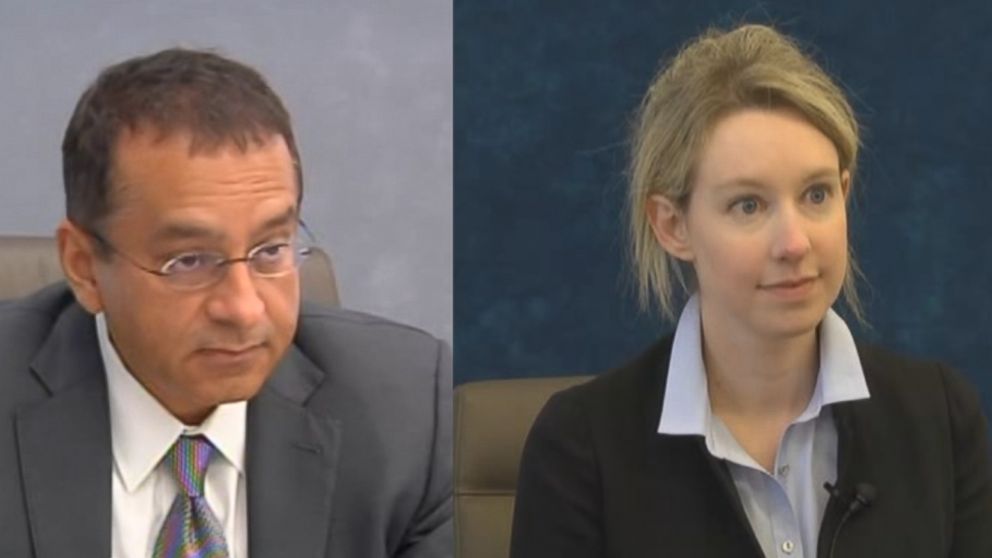
"The entire department knew about her Chinese, her skills. When I first met her, I’m like, 'Oh, you must be the Elizabeth Holmes,'" Balwani recalled in his deposition.
After that summer, Holmes and Balwani kept in touch. Holmes’s brother, Christian, remembers her talking about Balwani when she returned from China.
"I don’t know how you would qualify romantic versus personal, but as soon as they, as soon as she came back from China she mentioned they had a friendship," Christian Holmes V said in a 2017 deposition obtained by ABC News and featured on "The Dropout."
Eventually, that friendship developed into something more. According to public records, Balwani and Holmes even shared a residence about four miles from the Theranos office.
And shortly after Balwani joined the company in 2009, they went after the biggest collaboration Theranos had to date -- a partnership with Walgreens.
Holmes and Balwani were hoping to put Theranos technology in the pharmacy chain’s 8,000+ stores. If the collaboration went through, it would place Theranos technology within a few miles of almost every home in the country. Holmes said in her SEC deposition that they were interested in Walgreens because of that retail footprint.
In their first pitch in January 2010, Walgreens said in a court filing that Theranos claimed they had developed "small point-of-care devices that, for the first time, could run any blood test in real-time."
Walgreens claimed that Theranos was promising a device that patients could use right inside their stores, to get an accurate result for any lab test - from STDs to the earliest appearances of cancer. Walgreens said in court filings that Theranos promised they could do this for less than half the cost of central lab tests, with only a few a few drops of blood from a finger prick.
On March 22, 2010, a few months after that initial email from Theranos to Walgreens, Holmes and Balwani flew to the Walgreens headquarters in Deerfield, Illinois. They sat down with Walgreens executives and made a very compelling powerpoint presentation.
According to Walgreens’ lawsuit against Theranos, at this initial meeting, Walgreens said that Holmes and Balwani made the claim that the technology was "viable and consumer-ready," and that Theranos Systems were validated under FDA guidelines. Walgreens claimed that Theranos said that the finger-stick technology would be ready to launch to consumers later that year.
Walgreens also said in that court filing that Theranos even claimed their technology had been used by the U.S military in foreign government operations.
Holmes would be pressed about this claim under oath during her deposition years later.
"Was a Theranos-manufactured device ever deployed in the battlefield?" an attorney for the SEC asked Holmes during her 2017 deposition.
"No," Holmes answered.
SEC attorney: "Was it ever deployed in a medevac helicopter?"
Holmes: "No."
SEC attorney: "Was a Theranos-manufactured device ever deployed in an Apache helicopter?"
Holmes: "No."
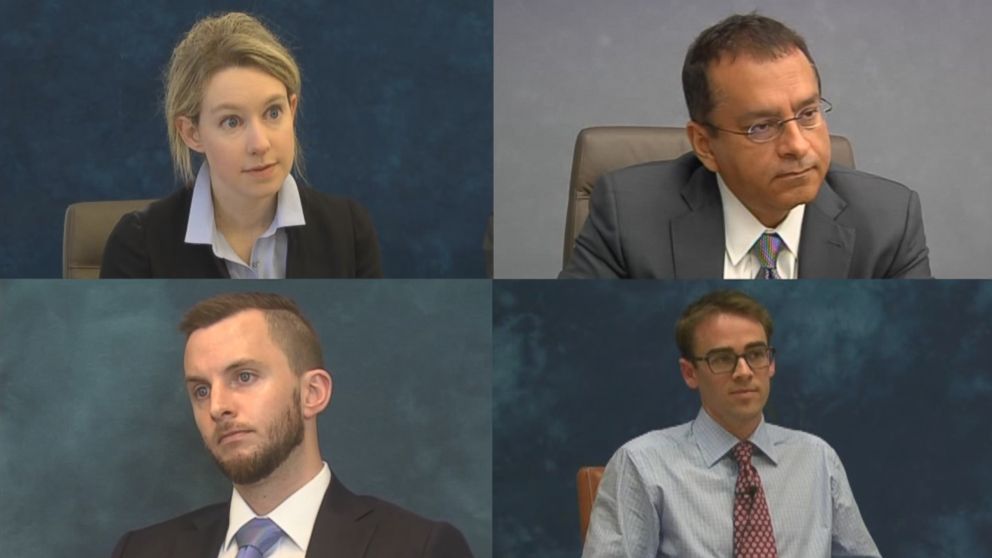
A few months and conversations after that meeting, Walgreens struck an initial deal with Theranos. But before putting the technology in stores, Walgreens wanted to make sure everything was on the level. So they put together a team and brought in a lab consultant, an expert named Kevin Hunter.
"When I was born, my family had a small chain of drug stores in Albany, New York, and my father ran one, my grandfather ran another. Interesting that it goes full circle and I ended up working with the largest pharmacy chain in the world," Hunter told Jarvis.
Hunter is the president and CEO of Collaborate, a laboratory consulting firm. His role was to help Walgreens vet the opportunity with Theranos and provide guidance about the legitimacy of the testing and its ability to be reproduced, among other things. It was called "Project Beta."
By the time Hunter had joined the team, he had already heard some impressive stories about Theranos: "That they had been wildly successful, the technology has been used on the battlefield of Department of Defense, that they were doing in-home testing for people and that also they were working with either seven of 10, or eight of 10 of the largest pharmaceutical companies in the world with this technology," he said.
In August 2010, Hunter and some of the Walgreens executives flew out to Silicon Valley for a meeting at the Theranos headquarters. From everything he had heard, he had high expectations.
"We arrive and the first thing you see is that Sunny had a Lamborghini that was parked right up front and he was very proud of the fact that he had been successful in other technology businesses and that was his car," Hunter said.
Hunter and his team met Holmes and Balwani on the ground floor of the building and were immediately taken upstairs to a conference room.
"We weren’t allowed to look around or talk to anybody or anything like that ... for example, we would break to go the restroom. They would literally walk us to the restroom and then walk us back...Sunny would literally walk me to the restroom ... It was kind of crazy. He literally would wait outside the restroom and then walk me back. And so that was unusual." Hunter said.
At this meeting, Hunter said he repeatedly asked about the laboratory and when they could see it.
"They said, 'After lunch,' and then after lunch, you know, it turned into 'We really don't want to show you the laboratory.'" Hunter recalled. "I kept asking to speak with like a Chief Medical Officer or the scientists that was working on the test development ... and they said they want to keep the conversation at a high level and not bring anybody into it yet."
Hunter also wanted to see a demonstration to compare the Theranos testing to another lab. He suggested they run some of the basic lab tests at Theranos and then do the same at Stanford University, which was nearby.
"They refused to do that," Hunter said. "And when I asked Elizabeth as to why she wouldn't let us do it, she said that she didn't trust the Stanford results. And I found that really ironic for somebody who supposedly dropped out of Stanford and then, you know, thought very highly of the university, to not believe their laboratory results."
According to Hunter, the whole meeting felt like one big dodge after the next and after the lab visit that would never come to be, they went out for an early dinner at 3:00 p.m., where Hunter described the experience as "kind of bizarre."
"We weren't allowed to follow them," he said. "We had to just meet him in the back room. We get to this restaurant, there's no one there yet we still meet in the back."
Holmes had a "standard kind of green protein shake" and was dressed in all black, Hunter said. Balwani had "sushi or something like that."
"We're not allowed to talk to each other by name, yet Sunny drives his Lamborghini," Hunter continued. "So if you are concerned about people following you or seeing you or something like that, why are you driving around Palo Alto in a black Lamborghini? It just didn't add up."
The more Hunter saw, the more questions he had. He wanted to know exactly how Theranos planned to run all these tests they were claiming that their technology was capable of.
"One of the documents that I have shows that they said they could do 250 tests and you know, that was August of 2010 on their letterhead," Hunter said. "I never saw anything that would give any credibility to the fact that the instrument did anything at all."
Theranos’s claim that it could do all the tests on one drop of blood was "just a complete farce," he added.
"You know you 'fake it until you make it' to a certain extent, but when you're talking about testing people and people taking these lab results and making life decisions based upon the results you give them," Hunter said. "You need to makes sure they are right and they [Theranos] just blew it off."
But nevertheless, the Theranos deal with Walgreens went through.
Hunter said that he was very nervous and ultimately made the decision to stop working with the pharmacy giant. He said that he was afraid of being guilty by association.
"By me continuing to be involved that was almost endorsing it and I didn't want that I didn't want that to damage my reputation," he said.
In January 2012, Walgreens said in a lawsuit, that Holmes and Balwani claimed they were on the right track with regulatory approvals and claimed their revolutionary technology was advancing and would require 99.9 percent less blood than the traditional blood testing services already on the market. The pair, according to Walgreens’ lawsuit, promised Theranos would be the "nation’s lowest cost and highest-quality laboratory provider."
That year, Walgreens signed an amended agreement with Theranos, and by late 2013, they started rolling out Theranos Wellness Centers inside Walgreens stores. Within two years, there were 41 Theranos Wellness Centers in stores located in California and Arizona.
When Hunter’s wife saw all of the publicity surrounding Theranos and Holmes at that time, Hunter said she questioned whether her husband’s instincts were wrong.
"She said, 'You know don't you think you need to just admit you were wrong on this one?'" he said. "And I said, 'You know what, I will go to my grave knowing that ... this wasn't legit and I said it may not be today, it may not be next week or next year. But the truth will come out.'"
Eventually, the truth did come out, but it took years before Walgreens executives understood Theranos’ pitfalls.
"They were fooled too," Reed Kathrein, a partner at Hagens and Berman, who sued Theranos on behalf of investors, told Jarvis.
"They had executives that had their blood tested in rooms with the machines sitting there by their side," Kathrein continued. "And they had to have their blood tested and then they go off and have lunch, and in the background, there were few tests that they could run one at a time on a Theranos machine, but they basically made it look like it was being run on this machine in the room. But they were actually doing it by hand in the lab. And so the Walgreens people got those results and thought, wow this works."
These allegedly fake demonstrations were something that Theranos employees would even joke about.
"During demonstrations the joke was they would put the cartridge into the device and there was a glove there that would take it and go run it somewhere else because they knew demo wasn’t going to work. That was a pretty common joke," former Theranos employee, Tyler Shultz, said in a 2017 deposition obtained by ABC News and featured on "The Dropout."
In fact, back before the Walgreens deal came together, there were experts inside of Theranos who said they knew something was up and were flabbergasted by Holmes’ claims.
One of those experts was Ian Gibbons, a biochemist who was named Theranos’ chief scientist in 2005. Gibbons was an accomplished, Cambridge-educated scientist with nearly 200 patents to his name. He learned about Theranos from board member and Holmes advocate, Channing Robertson. Gibbons and Robertson had worked together at the biotech company, Biotrack.
"If anyone could do this technology, it was Ian," his wife Rochelle Gibbons told Jarvis.
Rochelle Gibbons, who is a scientist herself as well as a patent attorney, said her husband was initially apprehensive to talk about his work at Theranos because of the startup’s secretive environment.
"Elizabeth was isolating him. Probably everyone else too. But he didn’t know that. Most scientists are really social...And there was none of that at Theranos." Gibbons said.
As Theranos was closing in on its deal with Walgreens, Gibbons said her husband knew that none of the Theranos technology was working and that he told her Theranos’ machines were not giving accurate results.
Holmes may have been selling a fully realized product, but Gibbons said that pitch was more fantasy than reality. Regardless, Gibbons said her husband went in early every day trying to make it work, while Holmes would frequently be out of the office, peddling her product to investors, marketers and board members.
Gibbons said the more her husband saw, the more he thought the company was misrepresenting itself, committing fraud in his eyes and even putting people’s lives at risk.
"Ian felt like people's lives were on balance and along with his own scientific integrity. So he was just deeply distraught. He went to talk to Channing and in confidence and he [Channing] told Elizabeth about it and she fired him on the spot." Gibbons said.
Gibbons said her husband was almost immediately hired back, but he was demoted and took it hard. Rather than leading the scientific team, she said Ian was evaluating people’s CVs. She also said that there was another scientist in charge of building maintenance.
"I think they were window dressing...she needed scientific credibility and Ian gave her scientific credibility," Gibbons said.
According to Rochelle Gibbons, while all of this alleged deception was going on, Theranos was the plaintiff in a big patent lawsuit. Ian was subpoenaed by the defense and she says he was incredibly anxious out about it.
Gibbons said that her husband faced either perjuring himself and defending the company, or openly admitting the technology didn’t work.
"He told me that he didn't believe Elizabeth just because she's a pathological liar. So he really didn't want to testify, because he was over a barrel. They would fire him if he didn't go along with the company's story." Gibbons said.
Even when he started at Theranos, Ian Gibbons had struggled. He’d been diagnosed with cancer in his early years at the company and had missed some time at work due to surgeries and chemotherapy. Despite that, he still looked to the Theranos opportunity as a bright new chapter.
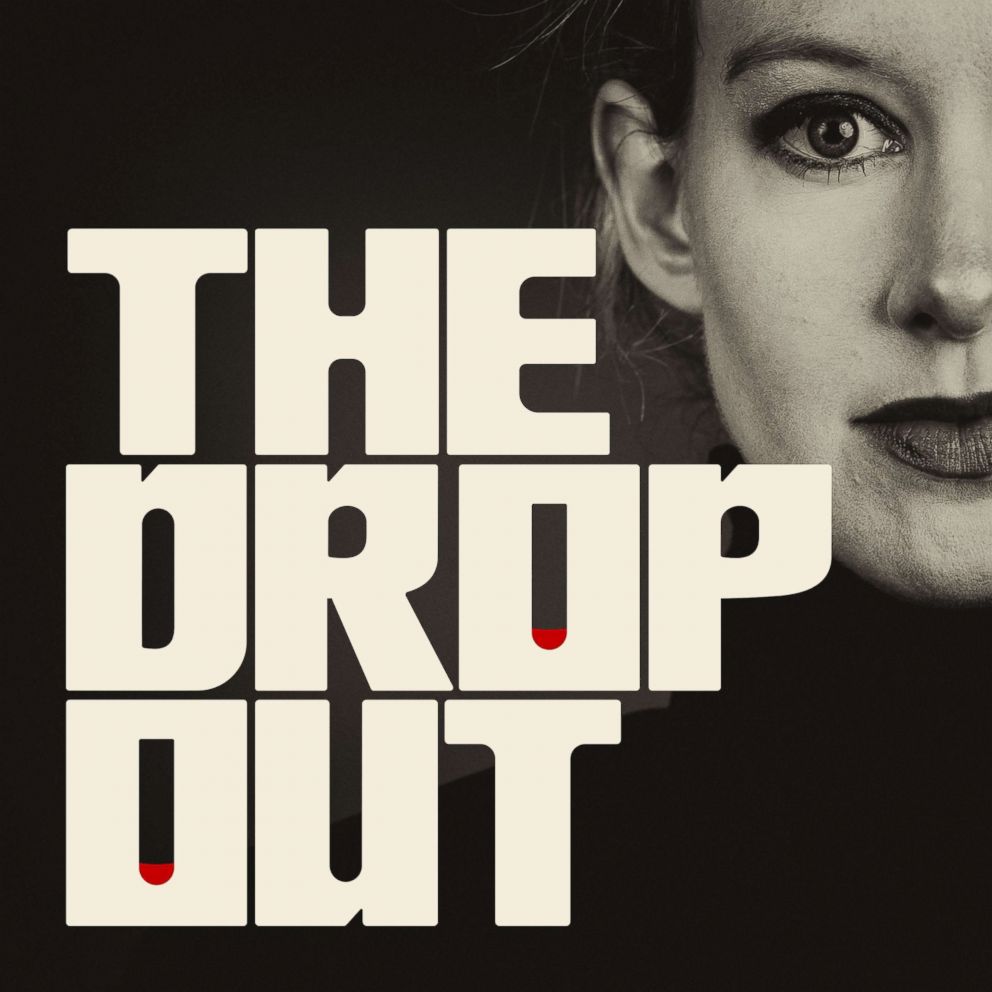
But Rochelle Gibbons said the lies her husband saw and the treatment he experienced set him further and further back. According to Rochelle Gibbons, the pressure of the lawsuit and Holmes’ relentless intimidation tactics put him over the edge, and he started showing signs of depression.
Gibbons said that Ian was torn, by this point he didn’t like Theranos but he also didn’t want to be unemployed. She also said that her husband and Holmes did not get along.
"He just hated her. She's a bully, for one thing. She bullied him. She made him feel bad all the time." Gibbons said.
One evening in May 2013, Gibbons said her husband came home filled with dread. Sitting in the family room of their sprawling ranch-style house, with two enormous heritage oaks out front, Gibbons said she and Ian had a long conversation. She said he was supposed to meet with Holmes the next day. He expected to be fired, and he wanted to confront her.
"He told me how upset he was, told me he’d never been as upset and sure enough I thought that things were going to be fine because we’d see the doctor the next day and get him treated for the depression," Gibbons said.
Rochelle Gibbons said she woke the next morning to find her husband had attempted suicide. He was rushed to the hospital. Rochelle Gibbons called Theranos to let them know he wouldn’t be showing up for his meeting with Holmes.
A week later, Ian Gibbons died with his wife by his side. He was 67 years old. When Theranos reached out, Rochelle Gibbons said it was in the form of two letters.
"One was the email demanding all the intellectual property and any other lab books or things the computer and then the other one was a letter from their lawyer warning me against telling anyone what happened to Ian," she said.
Ian Gibbons had worked at Theranos for 10 years and according to his wife, the company never sent condolences.
"I fully expected something from them and they didn't do anything. And then the other thing was absurd that is that they could think that they could sue me for talking about Ian. You know they couldn't. I guess they were trying to scare me, to intimidate me into thinking they're going to get me for defamation. But the defense, the defamation is truth and so you know I'm telling the truth here, not lying about Theranos." Gibbons said.
Ian died just months before the partnership with Walgreens came together, before the first Theranos Wellness Center opened in Palo Alto.
"People like that should be in jail. They should not be allowed to destroy people's lives," she said.
Holmes and her counsel did not respond to ABC News' repeated requests for comment. Balwani’s attorney, Jeff Coopersmith told ABC News that if he were to give Balwani a grade for his job at Theranos it would be "an A+ for dedication and effort."
"Obviously when we look at this after the after the fact it has been a business failure ... And you know Mr. Balwani is very sorry about that... but that is not fraud," he added.
"The Dropout" is a six-part series on the rise and fall of former Silicon Valley darling Elizabeth Holmes and her company Theranos. It is written and produced by ABC News' Rebecca Jarvis, Taylor Dunn and Victoria Thompson. Listen to "The Dropout" for free on Apple Podcasts, Google Podcasts, iHeartRadio, Spotify, Stitcher, TuneIn, the ABC News app, or your favorite podcast player.




